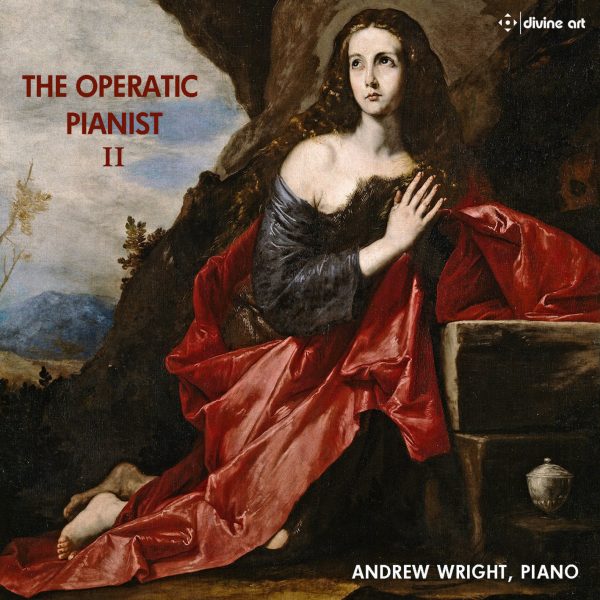Audiophile Audition
I vividly recall an intermission feature of the Metropolitan Opera broadcasts in which the late Jorge Bolet delivered a lecture-recital—compressed into fifteen minutes—on Liszt operatic transcriptions, paraphrases and reminiscences, given Liszt’s great contribution to 19th Century pianism and his desire to extend the operatic repertory to those towns and villages throughout Europe that may have lacked an opera house. Nor was Liszt the only advocate for operatic “transmission” via the keyboard, since Sigismund Thalberg (1812-1871) contributed his own share of virtuoso transcriptions despite posterity’s having granted the garland to Liszt.
Contemporary pianist and composer Andrew Wright (rec. 11-12 April 2016) provides us a set of nine opera arrangements for solo keyboard, beginning with Reminiscences of Norma by Alfred Jaell (1832-1882). The fluttering virtuosity of the piece does not attempt to rival Liszt’s own mighty transcription, but it does include Casta diva, here set as an arioso, dramatic jewel. The use of repeated notes in the treble has the earmarks of both Gottschalk and the pianola sound from silent film accompaniment. The music of Bellini receives direct treatment from Andrew Wright (b. 1967) himself, setting the bel canto aria “Cor sorriso d’innocenza” from Il Pirata, first with a con flauto introduction and then a literal application that tests the last two fingers of the right hand. Rare enough, the Andante Finale de Lucia di Lammermoor by Theodore Leschetizky (1830-1915) for the left hand testifies to the prodigious fluency of the great pedagogue’s digital dexterity, but to an adept version of the famous sextet from the opera.
Wright continues with the largest of the offerings, Thalberg’s Fantasie sur Mose in Egito, after Rossini, a transcription noted for its sheer breadth and seriousness of purpose. Besides potent declamatory passages, the piece proffers lyric, lulling sequences of scalar ariosi, built upon Rossini’s patented crescendos. The succeeding, swaggering melody and its treatment smack of Chopin’s bravura treatment of Mozart for his own Op. 2. The last section intones the same sauntering melody Paganini exploited—here, over rounded, glittering arpeggios—for his own purposes upon the G string. Typically, the dynamic increases, as do the spectacular pyrotechnics.
Theodor Kullak (1818-1882) set the Cavatine from Meyerbeer’s Robert de Diable as one of 12 Transcriptions, Op. 6. Here, Kullak receives his first commercial recording. The Meyerbeer opera had proved enormously popular to the Paris audience of the 1830s. The Act IV Cavatina receives the usual hyper-romantic effects, rife with huge chords and tolling bass ostinatos. Camille Saint-Saens (1835-1921), like Liszt, had a great reputation as a virtuoso pianist, and Saint-Saens makes a fervent, horse-back approach to his introductory material for the Concert-paraphrase on Massenet’s Thais and its denouement death-scene. For half the piece, the music resembles a Liszt transcendental etude. Then a series of bell-tones in diatonic harmony announce the “Meditation” motif from earlier in the opera, a variant on Wagner’s love-death conceit.
Liszt has the last word, via his son-in-law Wagner, to conclude with most flamboyant means. Wright applies his formidable prowess to an 1859 Fantasy on Themes from Rienzi that includes the famous “prayer” motif—set in glorious Technicolor—and the martial passages taken from the overture. Liszt adds one more motif from the tribune’s sense of honor.
Stunning piano sound courtesy of Recording engineer and editor Graeme Watt makes the entire engaging and educational, at once.
@divineartrecordingsgroup
A First Inversion Company
Registered Office:
176-178 Pontefract Road, Cudworth, Barnsley S72 8BE
+44 1226 596703
Fort Worth, TX 76110
+1.682.233.4978












